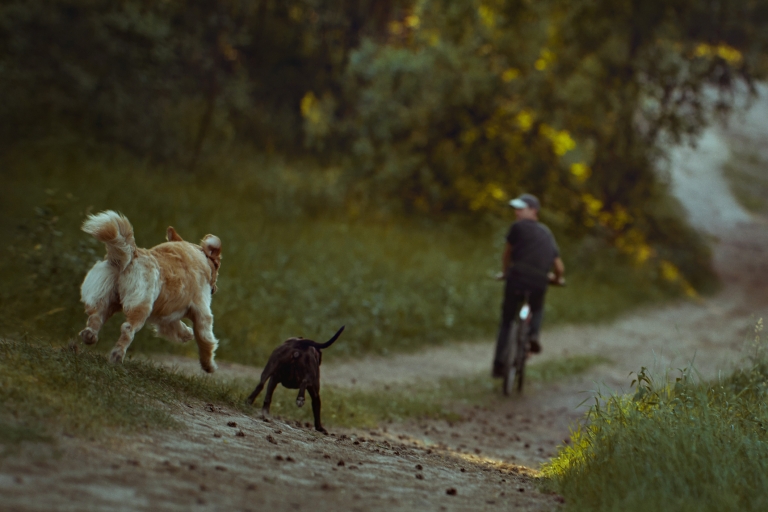
Motorcycle Riders vs. Chasing Dogs: Understanding and Navigating the Threat

With their roaring engines and swift movements, motorcycles often attract our canine friends' attention. While some dogs may be merely curious, others can be aggressive, threatening riders. Understanding why dogs chase and how to handle such situations can be crucial for motorcycle riders.
Why Do Dogs Chase Motorcycles?
The American Kennel Club (AKC) provides insight into this behavior. Many dogs, regardless of breed, have an inherent desire to chase. This behavior is particularly pronounced in:
- Sighthounds: Bred over thousands of years to chase down prey, these dogs, ranging from Afghan Hounds to Whippets, are naturally inclined to pursue moving objects due to their keen eyesight and heightened awareness.
- Herding Breeds: Motorcycles can awaken their instinctual desire to gather and herd, leading them to chase after bicycles, skateboarders, and, of course, motorcyclists.
- Terriers: With a high prey drive, they, too, can be inclined to chase moving vehicles.
Chasing is self-rewarding for many dogs, making it a behavior they indulge in with enthusiasm.
Tips for what to do if a Dog is Chasing or Coming at you on your Motorcycle
- Downshift and Slow Down: If you spot a potential chaser, downshift and reduce your speed. This makes you a less enticing, slow-moving target.
- Maintain Distance: Always aim to keep a safe gap between you and the pursuing dog. If traffic conditions allow, you can momentarily veer away to increase this distance before returning to your lane.
- Accelerate Away: As the dog approaches, swiftly accelerate, leaving the canine behind. This strategy is effective for both friendly and aggressive dogs.
- Avoid Engagement: Never try to kick or engage with the dog. Not only is this dangerous, but it can also escalate the situation.
- Stay Alert in Traffic: If in traffic, remain vigilant of other vehicles. A collision with a small animal like a dog is less hazardous than with a larger vehicle.
- Prepare for Larger Animals: For bigger animals like deer or elk, it's best to brake and be ready to stop, as their movements can be unpredictable.

Understanding Dog Behavior During a Chase
- Territorial Instincts: Some dogs chase to protect their territory. They aim to drive away perceived intruders and will typically stop once you've moved a sufficient distance away.
- Speed Limitations: While a dog might momentarily keep pace, they cannot outrun a motorcycle. The fastest breeds, like greyhounds, can reach up to 45 mph but only for short distances. Most dogs will tire after chasing for 2 to 5 miles.
- Aggressive Pursuits: In rare cases, aggressive dogs might attempt to bite a rider's legs or the motorcycle's tires. Proper footwear can offer some protection, and riders should be cautious not to lose balance if a dog makes contact.
- Cars with Dogs: Riders should be wary of vehicles with dogs leaning out of windows. The close proximity can startle the dog, leading to aggressive reactions.
Understanding a dog's behavior and following safety protocols can ensure rider safety when encountering a dog chasing a motorcycle. The goal is not to outrun the dog, but to navigate the situation safely and continue on the journey while prioritizing safety for all road users.
